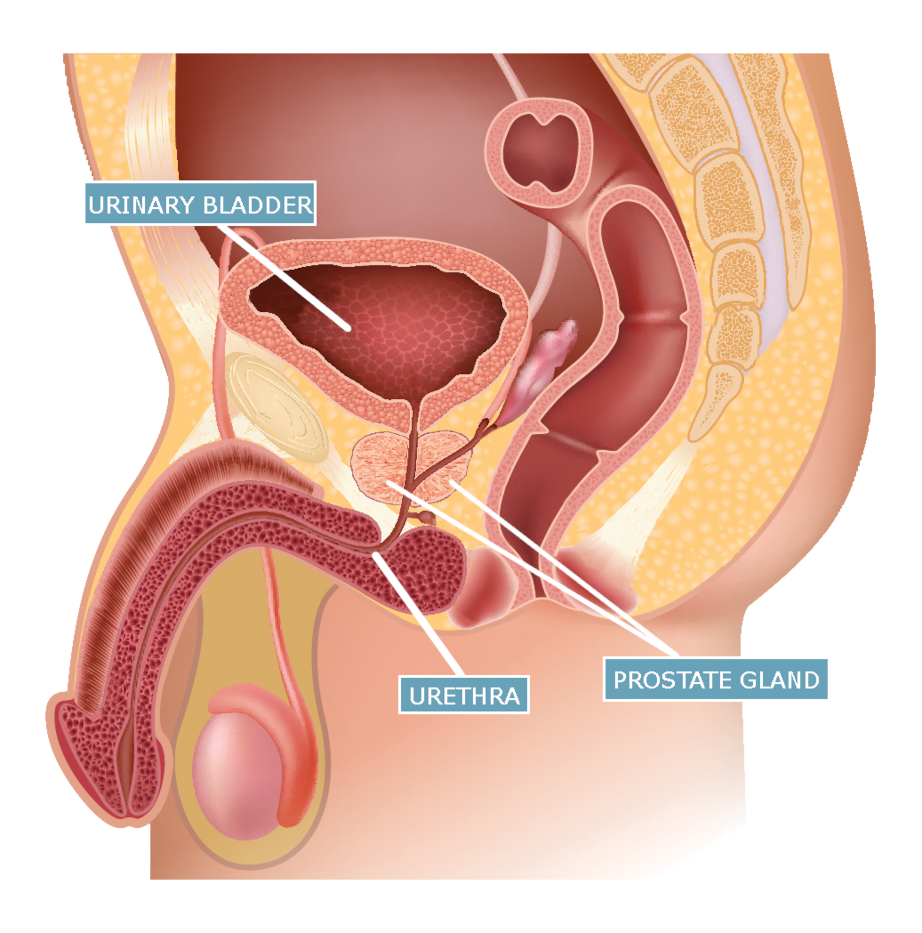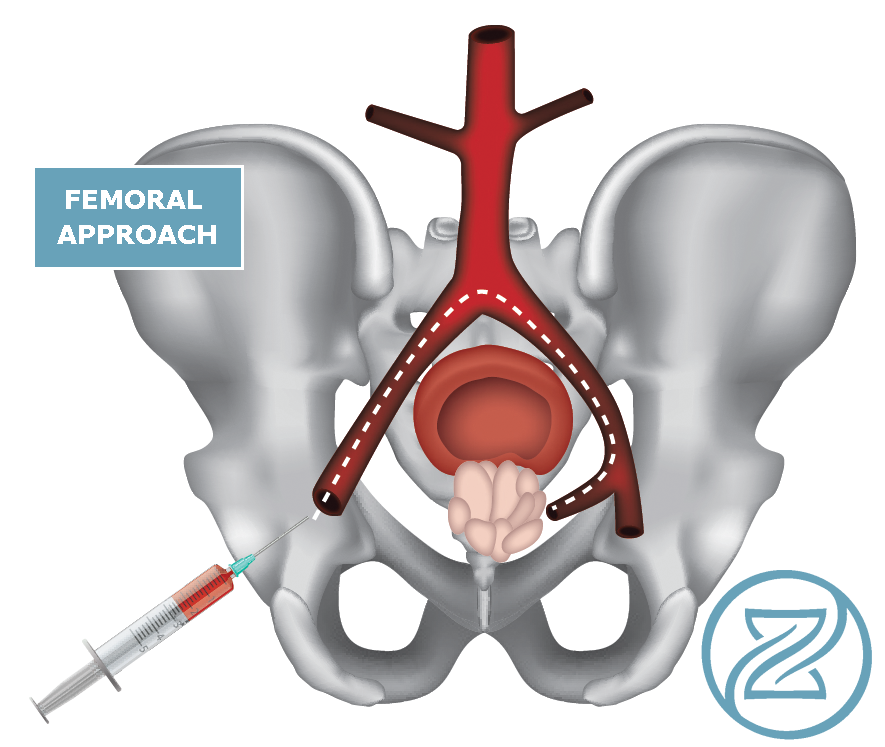Prostate Artery Embolization (PAE)
A Minimally Invasive Procedure
Prostate Artery Embolization is an outpatient, minimally invasive procedure that eliminates the symptoms of BPH without major surgery. The objective of PAE is to interrupt the arterial blood supply to the prostate. PAE targets the central enlarging tissue predominantly. With reduced blood supply the abnormally enlarged prostatic tissue atrophies and this relieves pressure on the urethra. The consequence of this is that lower urinary tract symptoms improve or disappear.
At Zenith Vascular & Fibroid Center, we strive to provide the absolute best patient care and treatments possible.

What Are The Most Common Symptoms of Benign Prostatic Hyperplasia (BPH)?
An enlarged prostate, also known as benign prostatic hyperplasia (BPH), can cause a variety of urinary symptoms. Here are some common symptoms associated with an enlarged prostate:
- Frequent urination: Feeling the need to urinate more often, especially during the night (nocturia).
- Urgency: A sudden and compelling urge to urinate that may be difficult to delay.
- Weak urine flow: A weakened or diminished stream of urine during urination.
- Hesitancy: Difficulty initiating urination, often with a delay or hesitation before urine starts to flow.
- Incomplete bladder emptying: A feeling of not fully emptying the bladder, even after urination.
- Dribbling: Urine that continues to drip or dribble after completing urination.
- Straining: The need to strain or push to initiate or complete urination.
- Urinary retention: Difficulty completely emptying the bladder, resulting in residual urine that can lead to increased urinary tract infections.
- Erectile dysfunction, generally caused by medication
What is the prostate?
The prostate is an accessory organ of the male reproductive system. Located below the bladder and shaped like a walnut, it produces a slightly thick fluid that helps preserve sperm after ejaculation, helping it to remain viable in the vagina. Because the prostate surrounds the urethra, urination can be affected when prostate disease is present.
Symptoms related to Benign Prostate Hyperplasia (BPH) are present in about one in four men by age 55, and in half of 75-year-old men. Treatment is only necessary if symptoms become bothersome.
An analysis of “real-world” clinical practice data shows African-American men with BPH have a much greater risk of developing prostate cancer compared to similar Caucasian men. This data highlights the need for education and early detection for African-American men.
Watch this short animated demonstration video on how the prostate artery embolization procedure is performed.
The basics of Prostate Artery Embolization
The objective of PAE is to interrupt the arterial blood supply to the prostate. PAE targets the central enlarging tissue predominantly. With reduced blood supply, the abnormally enlarged prostate tissue atrophies and this relieves pressure on the urethra.
The consequence of this is that lower urinary tract symptoms improve or disappear. The PAE procedure has a lower risk of urinary incontinence and sexual side effects when compared with more invasive surgical procedures.
What is the success rate of PAE?
Prostate artery embolization has a high rate of success with over 90% of men experiencing relief in the first year. Unlike other treatments that may have unwanted sexual side effects, PAE does not affect sexual performance. It may allow for the removal of an indwelling catheter and the termination of catheter dependence.
What happens during the PAE procedure?
• PAE is performed through a small catheter inserted by your doctor into the artery in your wrist or groin. The doctor will then guide the catheter into the vessels that supply blood to your prostate.
• An arteriogram (an X-ray in which dye is injected into the blood vessels) is done to map the blood vessels feeding your prostate.
• Tiny round microspheres (particles) are injected through the catheter and into the blood vessels that feed your prostate to reduce its blood supply.
• The doctor will move the catheter in order to treat the other side of your prostate, repeating the steps above.
• If a Foley catheter (a thin, hollow tube held in place with a balloon at the end) has been inserted into your urethra and positioned in your bladder to provide a
reference point for the surrounding anatomy it will be gently removed at the conclusion of the procedure.
• Following this procedure, the prostate will begin to shrink, relieving and improving symptoms usually within days of the procedure.
• Blood in the urine is largely diminished or eliminated.
• Closure of the surgical incision requires only a Band-Aid.


Benefits of Prostate Artery Embolization
Non-surgical
PAE is a minimally invasive procedure that does not require traditional surgery with its associated risks, such as general anesthesia or major incisions. Instead, it is performed using catheters inserted through a small incision in the groin, which can lead to faster recovery and fewer complications.
Symptom relief
PAE aims to alleviate the bothersome symptoms of BPH, such as frequent urination, weak urine flow, urgency, and incomplete bladder emptying. By shrinking the prostate and reducing its pressure on the urethra, PAE can help improve urinary function and reduce urinary symptoms.
Preserves Sexual Function
Unlike some surgical treatments for BPH, such as prostatectomy, PAE has been reported to have a lower risk of sexual side effects, such as erectile dysfunction or retrograde ejaculation. This can be an important advantage for individuals concerned about maintaining their sexual function.
All major insurances accepted





